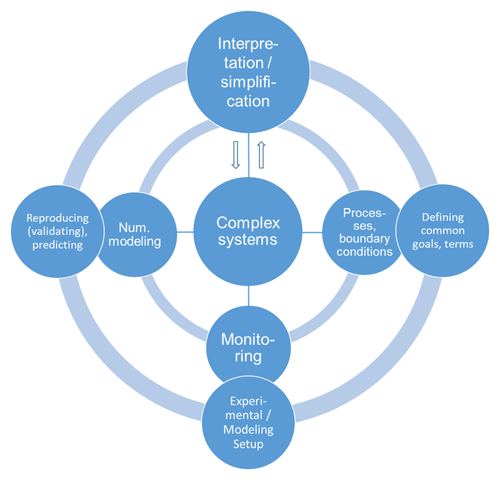Cross-scale perspective on the Opalinus Clay: insights from the GeomInt2 project
Understanding complex systems, such as radioactive waste repositories, involves the study of cross-scale coupled processes. We discuss some important concepts and their mutual interactions for interpreting such systems based on complementary model-based analyses at various scales (Fig. 1). These points are linked with practical examples that pertain to the hydromechanical effects and cracking of the Opalinus Clay. In the Federal Ministry of Education and Research (BMBF)-funded project “Geomechanical integrity of host and barrier rocks – experiment, modeling and analysis of discontinuities (GeomInt2)” (Cajuhi et al., 2023a in Kolditz et al., 2023), these effects have been investigated experimentally and numerically, both at laboratory and at field scales. While interpretation influences the conceptualization of experimental and/or numerical models, a clear goal definition is required to delimit the complex system. One goal statement in the context of this contribution is to explain the formation of drying cracks, where essential processes and boundary conditions must be pinned down. Monitoring data are critical for determining the correlation between experimental and numerical setups. This is achieved by quantifying and questioning the assignability of information derived from data obtained from core samples tested in the laboratory to field-scale analyses. Numerical modeling can help validate model ideas by reproducing measured data and making predictions beyond the experimentally observable range. The detailed information gained from these studies can be used for interpretation and simplification. In a recent study, we used the phase-field approach to model the formation and evolution of cracks and stated the conditions under which desiccation cracks will develop at the field scale as well as how deep they propagate into the rock (Cajuhi et al., 2023b). This information about the near field can be used to determine how detailed repository far-field models must be and, for example, whether cracks need to be taken into account. Consequently, the cross-scale study of complex systems can lead to more robust analysis results.






